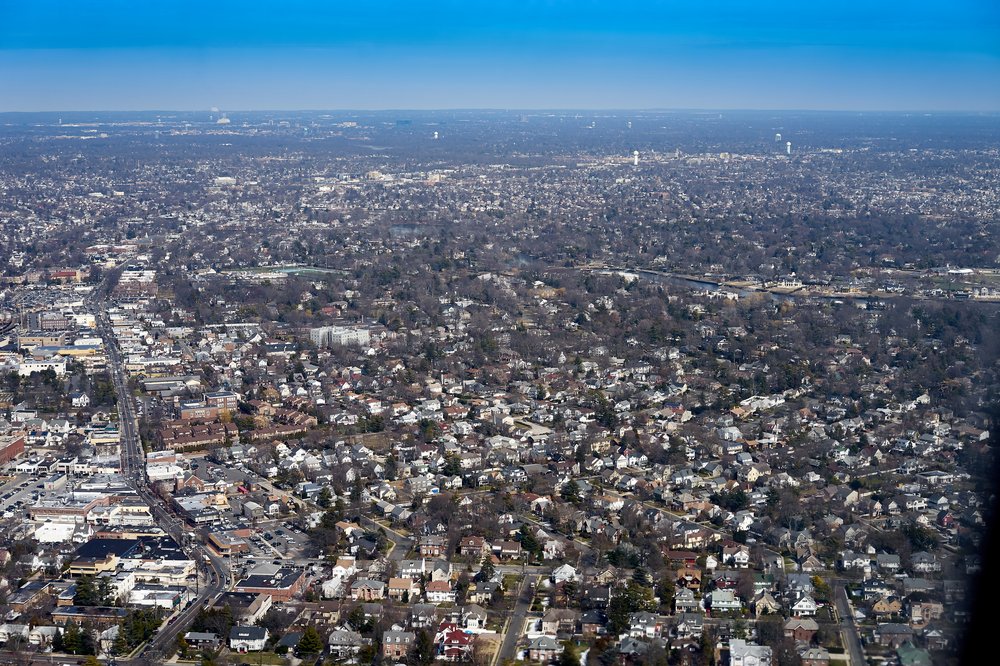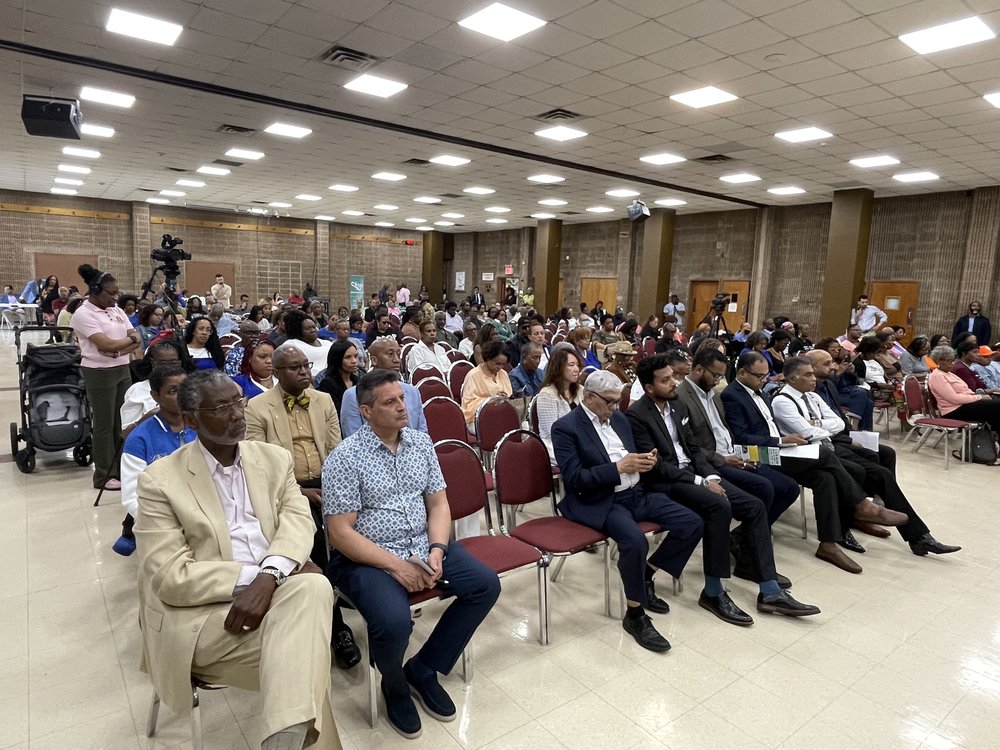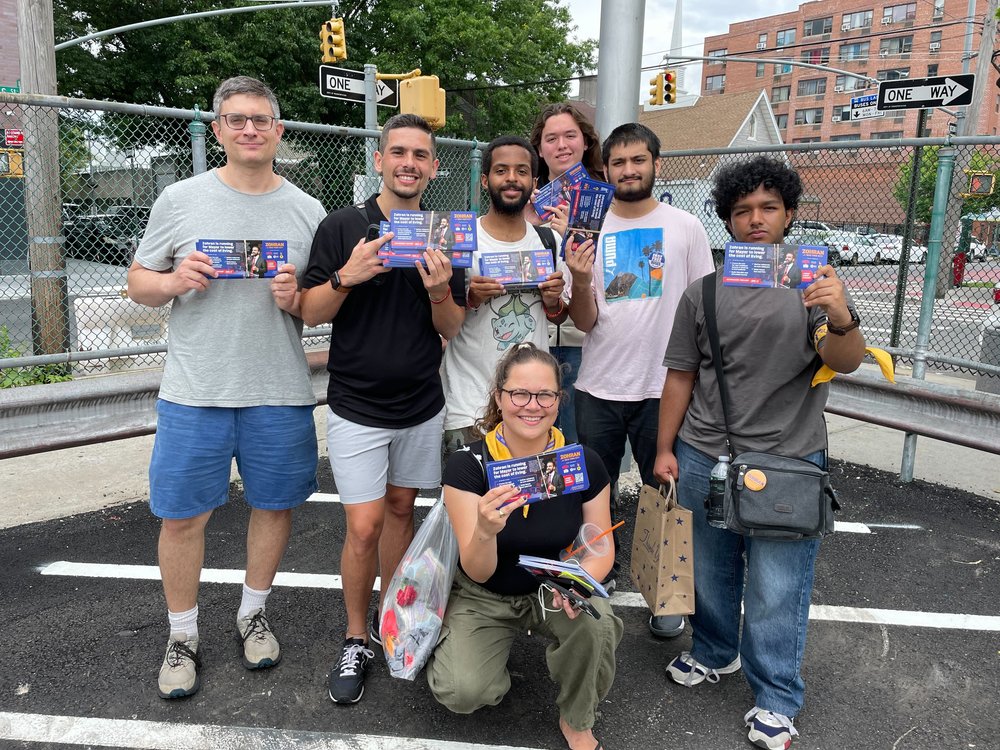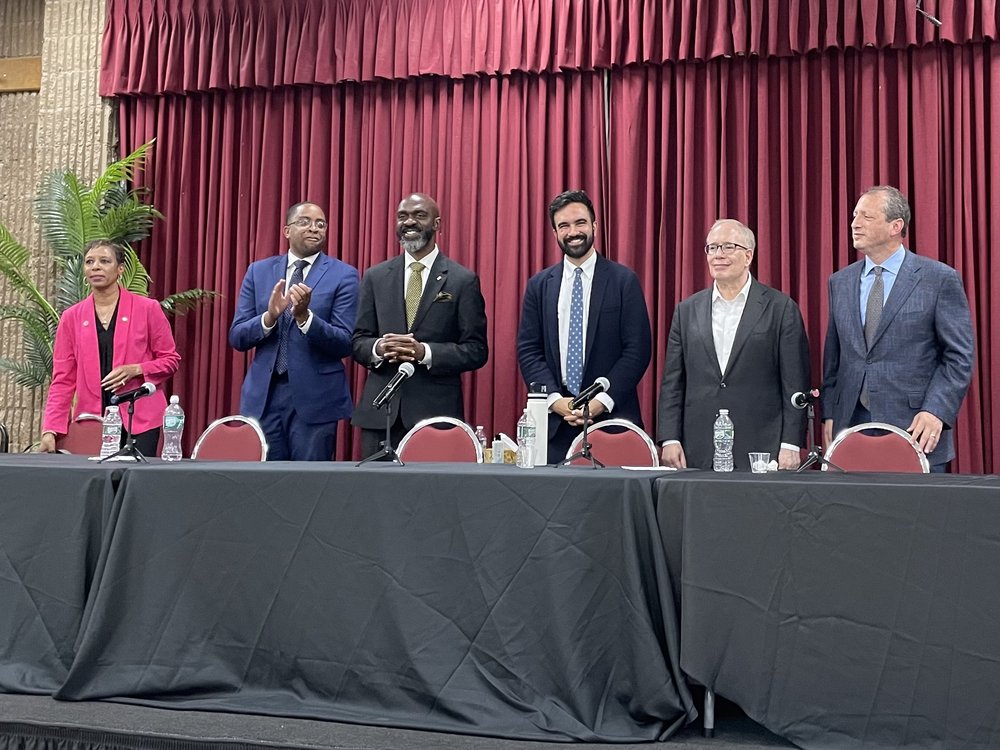Why the NYC Democratic mayoral candidates are vying for the Southeast Queens vote
June 17, 2025, 6:31 a.m.
For the past four mayoral elections, no Democrat has won the nomination without winning Southeast Queens.

The road to Gracie Mansion goes through Southeast Queens.
For the past four mayoral elections, no Democrat has won the nomination without winning Southeast Queens. Bill Thompson (who lost to Mike Bloomberg in the general), Bill de Blasio (twice) and Eric Adams (resoundingly) all racked up majority support in these high-turnout neighborhoods.
Queens is home to roughly a quarter of the city’s Black electorate. Neighborhoods like St. Albans, Springfield Gardens, Laurelton, Cambria Heights and Jamaica are historically majority Black neighborhoods. Voters here tend to be older, middle-income homeowners and political moderates, making them likely voters for candidates Andrew Cuomo, the former governor, and Adrienne Adams, the City Council speaker who lives in the area.
But like so many neighborhoods in the five boroughs, this area is changing. According to census data compiled by the Department of City Planning, between 2010 and 2020, the South Asian population increased by 20,000 in Southeast Queens neighborhoods, while the area lost 8,500 Black residents.
In interviews, residents of the area tended to favor Cuomo by a solid margin, but also showed an openness to Assemblymember Zohran Mamdani’s candidacy centered on affordability. One voter even said he planned to rank the former governor first on his ranked-choice ballot, and Mamdani second.
“I’ve been living at our house for 46 years now, and so we have seen the demographic changes,” said Dennis Walcott, former deputy mayor, city schools chancellor and current head of the Queens Library system.
He said people from the Caribbean, particularly Haiti, have recently moved to the area. The neighborhoods were also home to a burgeoning Bangladeshi population.
He saw a link between the typically high election turnout in the neighborhoods to their many homeowners.
“That stability translated into people having both ownership in their homes, but also ownership in the electoral process as well,” he said.

Black voters in Queens tend to be more cohesive than in other boroughs, often sharing similar educational backgrounds and income levels, said political scientist John Mollenkopf, director of the Center for Urban Research at the CUNY Graduate Center.
“It is hard to imagine anyone winning the mayoral nomination without at least a majority of the primary voters in Black neighborhoods,” Mollenkopf said.
Assemblymember Zohran Mamdani has made mobilizing voters from immigrant communities a centerpiece of his campaign for mayor. The Mamdani campaign said volunteers are hitting the streets of Southeast Queens multiple times a week, hoping his progressive campaign can make inroads in the historically moderate neighborhoods.
The battle for Southeast Queens mirrors a larger question at the center of the Democratic primary: Will it be determined by the voters who typically head to the polls in New York City’s low-turnout local elections, or will Mamdani succeed in activating new voters?
Deep ties to Cuomo
Gothamist spoke with nearly a dozen voters outside Greater Allen A.M.E. Cathedral on Pentecost Sunday as worshippers streamed out of the church. Many wore red to mark the birth of the Christian Church.
Council Speaker Adrienne Adams attends the church, but most voters said they supported Andrew Cuomo. They shared fond memories of the former governor’s father, Mario Cuomo, and said they trusted Andrew Cuomo to manage a crisis.
“Not just during the pandemic, but during Hurricane Sandy,” said Eric Coleman, 57, a part-time driver living in Jamaica was picking up a churchgoer.
His passenger, 84-year-old Betty Neblett, said she was still making up her mind. She talked about the rising cost of living in Jamaica. “The taxes are so high that it is so hard to live, you know what I mean?”
She also voiced support for Cuomo, but said she still liked the incumbent Mayor Eric Adams. “I haven’t decided yet what way I’m going,” Neblett said.
Jeffrey Gurley, who said he was retired from the NYPD and “in his 40s,” said he liked Cuomo, but planned to switch his support back to Adams in the general election.
In other parts of Southeast Queens, voters were far less equivocating. Bishop Calvin Rice, who leads the New Jerusalem Worship Center, an independent Christian church in Jamaica, invited Cuomo to deliver his stump speech from the pulpit this past Sunday.
“ Tell your neighbor. Wake up,” Rice said, slamming Mamdani. “He can't afford to give you a free bus unless he raised your taxes on the other end.”
“ I can't tell you who to vote for, but I can tell you who I'm voting for,” Rice said, nodding towards Cuomo, “I'm voting for the man right here.”
Mamdani's ground game
On a recent rainy Saturday, a group of seven volunteers met at a Dunkin’ Donuts on Jamaica Avenue. They ranged in age from 15 to 43 years old. And they carried Mamdani fliers in English, Spanish and Bangla. Together, the team embodied the evolving demographics of the neighborhood.

Abid Mahdi, 15, of Jamaica, was one of the field leads, which means he was one of the people training new volunteers that day, distributing fliers to the teams and coordinating with other staff from the campaign. His canvassing partner was Philippe Wooley, 24, of Laurelton. The team’s talking points centered on Mamdani’s key policy proposals: free buses, city-run grocery stores, free child care and a rent freeze for stabilized tenants.
Mahdi came from a family of Bangladeshi immigrants who moved to Jamaica in 2011, after initially living in Astoria. Wooley was a Haitian American whose family had lived in Southeast Queens for two generations.
As they knocked on doors in a six-story building on Merrick Boulevard, they stumbled upon a rarity: the Cuomo-Mamdani voter.
“I like what [Cuomo] did for COVID,” said Shawn McCauley, a 54-year-old interior designer. “I know there was the nursing home stuff, but I don’t think that was his fault,” he added, referencing allegations that Cuomo manipulated the number of deaths from COVID-19 in nursing homes.
Wooley and Mahdi tried to persuade McCauley to change his mind. They mentioned Cuomo’s controversial $5 million advance for a book on leadership during COVID-19, when the pandemic was still raging. “We’re actually campaigning for Zohran,” Wooley said, noting the assemblymember’s push for free buses and universal child care.
“Yeah, that’s my second choice,” McCauley said.
Another voter in the building, Sultan MD Milki, 41, told the volunteers the most important issue to him was the cost of rent. Mahdi told him Mamdani had delivered a speech at the Jamaica Muslim Center during an Eid celebration the night prior.
“ He advocates for the Muslim community and communities all over New York City, no matter who you are, what you do,” Mahdi said.
Milki, who said he became a citizen in 2014 and was a full-time caregiver for his parents, held the flier and nodded.
Asked if any other campaign had brought information to his door: “No, this is the first time,” Milki said, adding that he planned to vote.
Homefield advantage for Adrienne Adams?
Adrienne Adams was late to join the mayor’s race and has struggled to get traction.
The City Council speaker has been a member of Greater Allen A.M.E. Cathedral for more than 25 years and received an early endorsement from its pastor, the Rev. Stephen Green, who said, “As soon as she jumped into the race, I moved from being a pastor to being a supporter.”
Dr. Osbourn Ross, a theologian at the church, was most concerned with how the next mayor would address the city’s housing crisis while also tackling more sensitive issues, he said, like racism.

“ The only person that I feel that speaks to these concerns, I think, is Adrienne Adams,” Ross said. “I know there are others that are ahead of her, but I don’t think they represent us,” he added.
Then Ross offered his unsolicited take on Cuomo. “Put it this way, we know the track record when Andrew Cuomo was governor,” Ross said. “He’s saying things now of what he’s going to do as mayor, which he did not do when he was governor. So he’s trying to pull the fleece over our faces,” he added.
Since launching her campaign in March, Adams has made her roots in Southeast Queens central to her pitch to voters. Her kickoff event was at a shopping center in the sprawling middle-income Mitchell Lama housing development of Rochdale Village.
“Everyone has their corner of the city,” Adams told the roughly 200 supporters who gathered for her event, “but Southeast Queens is mine.”
Before she took the stage, a parade of elected officials, including City Councilmembers Diana Ayala, Amanda Farias, Kevin Riley, Althea Stevens and Yusef Salaam, praised her entrance into the already crowded race. But some of those same speakers later shifted their allegiance to Cuomo.
“ Let me tell you this, if Adrienne Adams, our speaker, is going to be the mayor, it's because she will have a base called Southeast Queens,” said state Sen. James Sanders, whose Southeast Queens district stretches from Far Rockaway to Rochdale Village.
“Southeast Queens can decide who goes to the White House and who goes to the doghouse. Southeast Queens can decide who sits in Gracie Mansion,” he added.
Roughly a week later, his office sent out a statement that said he and a handful of other Black elected leaders from Southeast Queens were endorsing Cuomo. On the first Sunday of early voting, Sanders appeared with Cuomo at the New Jerusalem Worship Center in Jamaica.
Sanders also announced picks for the ranked choice race: Cuomo first, Mamdani second, city Comptroller Brad Lander third, Adams fourth and state Sen. Zellnor Myrie fifth.
Cuomo is a ‘Queens boy.’ Why’d he skip a voter event minutes from his childhood home?